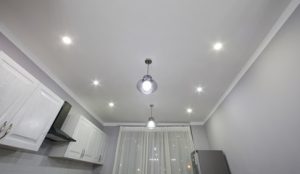When shopping for a used car, it’s important to consider its reliability ratings. Many online websites and auto magazines regularly rank cars based on their long-term dependability and performance.
A clean history report can help indicate a reliable Used Cars Antioch CA. Although other checks are also crucial. For example, check for signs of accident repair, like gaps between panels or paint color that indicates filler instead of paint.

Check the Vehicle History Report
The vehicle history report provides a comprehensive look at the car’s past. It can reveal hidden problems that might not be obvious from the outside, such as major accidents or frequent repairs. This information will help you make a more informed buying decision and prevent future headaches.
The first thing to check is the accident history. Look for any mention of major collisions and their severity. While minor accidents may not affect the reliability of a car, significant damage could lead to expensive repairs and compromised safety features. It’s also a good idea to review the title and ownership records. Be wary of cars with salvage or rebuilt titles, which indicate that the car has been declared a total loss by an insurance company and may have ongoing problems.
You should also pay attention to service and maintenance records. Look for gaps in repair work or a pattern of missed services, which could be a sign of neglect. Also watch for inconsistent mileage, which could indicate odometer tampering.
Finally, it’s important to note any recalls the vehicle has been subject to and whether or not the repairs have been completed. Unresolved recalls can compromise a car’s safety and performance, so it’s best to avoid vehicles with a history of them. Also, be wary of a history that shows the vehicle has been used for commercial purposes like taxis or rentals, as these types of usage tend to cause more wear and tear than personal use.
Check the Tires
There are a lot of things to consider when shopping for a reliable used car. How much it costs, its odometer reading, and what kind of condition it’s in are all important factors. But what is often overlooked is checking the tires and rims. These simple inspections can tell you a lot about how well a vehicle has been maintained and whether it has a history of major accidents.
Look at the tread depth of the tire and inspect the sidewalls for punctures, bulging, bald spots, or other signs of damage. Check the lug nuts as well, as loose ones can create dangerous safety hazards. It’s also a good idea to have a tire specialist inspect the tires to make sure they’re safe to drive on.
If the tires are more than 6 years old, you’ll want to look for signs of aging, such as small cracks in the flex points of the sidewall or in between the tread blocks, which could indicate dry rot. Also, be sure to check that the tire size markings match the manufacturer’s specifications.
Mismatched tires are a red flag that the seller may not have kept up with regular maintenance on the vehicle. Also, mixing tire types jeopardizes handling and fuel economy due to different compounds and tread patterns.
Check the Tire Pressure
A vehicle’s tires are its only point of contact with the road, and it is important to have the proper pressure for handling and fuel efficiency. The wrong pressure can cause a lot of issues, from causing the car to handle poorly to shortening its tire life. Fortunately, checking the tire pressure is easy and affordable, which makes it a simple but essential step for anyone looking to buy a used car.
Each vehicle has a specific recommended psi (pounds per square inch) that offers the best performance and safety. This information can usually be found in the owner’s manual or on a sticker on the driver’s door. It is crucial to note that the manufacturer’s recommended psi is measured when the tires are cold, as the pressure increases with temperature.
The best way to check the tire pressure is with a quality tire pressure gauge. To get an accurate reading, it is essential that the gauge fits the valve stem firmly and that you do not remove it too quickly. While measuring, listen carefully for any hissing sounds. These are signs that the seal is not airtight and could lead to inaccurate readings.
If the tires are not properly inflated, this can reduce their lifespan significantly and cause uneven wear. This can also lead to a loss of control and decrease the handling capabilities of the vehicle. Additionally, improperly inflated tires can be more prone to flats, which can lead to dangerous situations for the driver and other passengers.
Check the Odometer
The odometer can be a valuable indicator of a used car’s reliability. However, it’s not foolproof. Someone can tamper with an odometer using devices that plug into the port and rewrite stored data. If the odometer appears to show inconsistencies, it’s important to ask questions and request an official odometer disclosure statement.
Inconsistent odometer readings could mean that the car was driven more than it was reported to have been, which can cause expensive wear and tear on critical components. Also, if the vehicle has lower mileage than expected for its year, it might have sat in a garage or other protected environment, which can lead to dry rot and other problems.
A good way to evaluate a used car is to take it on a test drive. Drive it around town and on highways to check its acceleration, braking, handling, and noise levels. Also, pay attention to the engine and transmission for signs of problems. Finally, look for any musty odors that might indicate water damage or a faulty interior.
It’s hard to find the perfect used car, but you can avoid making a bad decision with careful research and an inspection from a professional. Taking the time to inspect a car can prevent you from purchasing a lemon and help you save money.

